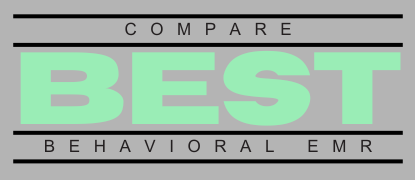As telehealth rapidly becomes an essential component of modern behavioral health care, selecting a behavioral health EMR designed specifically for telehealth integration is a critical decision for your practice. A specialized EMR platform not only streamlines remote patient interactions but also enhances documentation, compliance, and overall practice management efficiency. Whether you’re expanding teletherapy services or looking to upgrade from a traditional EMR, selecting the right technology can significantly improve care quality and patient satisfaction.
This guide will walk you through the essential considerations to help you find a behavioral health EMR platform optimized for telehealth.
Why Telehealth Integration Matters for Behavioral Health EMRs
The rise of telehealth has reshaped the behavioral health landscape, offering increased accessibility and convenience for both practitioners and clients. According to a recent report by the American Psychological Association, teletherapy services have grown exponentially, highlighting the importance of EMRs that seamlessly integrate telehealth functionalities.
A behavioral health EMR designed with telehealth in mind allows your practice to:
- Efficiently manage virtual appointments and scheduling.
- Ensure secure and HIPAA-compliant video conferencing.
- Streamline documentation and billing for telehealth visits.
- Improve patient engagement and satisfaction through integrated patient portals.
Effective telehealth integration reduces administrative burdens, allowing clinicians more time to focus on client care. Thus, selecting the right EMR partner is crucial to your practice’s sustained success.
Key Features to Look for in a Behavioral Health EMR for Telehealth
1. Secure and Compliant Video Conferencing
One of your top priorities should be ensuring your EMR provides secure, HIPAA-compliant telehealth video sessions. Robust encryption protocols, end-to-end security, and secure patient communication channels should be standard features, not optional add-ons.
2. Seamless Appointment Management and Scheduling
Your behavioral health EMR should simplify the scheduling of virtual appointments, sending automatic reminders via email or text to reduce no-shows. Integrated scheduling tools prevent double bookings and make it easy for clients to reschedule or cancel appointments directly from patient portals.
3. Integrated Documentation and Charting Tools
Documentation is a cornerstone of behavioral health care, and telehealth visits should be as easy to document as face-to-face sessions. Look for EMRs with intuitive charting tools that allow you to document sessions seamlessly during or immediately after a virtual visit.
4. Patient Portals and Engagement Tools
High-quality patient portals empower clients to access appointment details, complete online intake forms, securely message providers, and even pay bills—all from one convenient location. Engaged clients are more likely to adhere to treatment plans and report higher satisfaction levels.
5. Robust Reporting and Analytics
An EMR with built-in reporting capabilities gives you actionable insights into telehealth utilization, patient outcomes, billing accuracy, and other operational metrics. These insights allow your practice to continuously improve and adapt to evolving patient needs.
6. Strong Technical Support and Training Resources
Reliable customer support and training resources are crucial, especially for practices new to telehealth. Confirm that your EMR provider offers ongoing support, training materials, and responsive customer service to minimize disruptions to your practice operations.
Comparing Behavioral Health EMRs: Questions to Ask Vendors
When evaluating behavioral health EMR providers, asking targeted questions can help you determine whether the platform truly meets your telehealth integration needs:
- Does your EMR platform offer built-in, HIPAA-compliant telehealth capabilities, or will I need third-party integrations?
- How intuitive and user-friendly are your documentation and scheduling tools for telehealth appointments?
- Can patients easily access teletherapy sessions, appointment details, and billing through a secure patient portal?
- What types of reporting capabilities are available to track telehealth usage and patient outcomes?
- What kind of training and ongoing support does your company provide for practices new to telehealth?
By carefully comparing EMR vendors and asking focused questions, you can confidently identify the best behavioral health EMR for telehealth integration suited to your practice.
Common Pitfalls to Avoid When Choosing a Behavioral Health EMR
- Ignoring HIPAA Compliance: Not all video conferencing solutions are HIPAA-compliant. Always confirm compliance before committing.
- Underestimating Ease-of-Use: An overly complicated EMR will frustrate your clinicians and clients. Prioritize user-friendly software.
- Overlooking Scalability: Choose an EMR platform that adapts as your practice grows, especially if you anticipate increasing telehealth services in the future.
- Disregarding Vendor Support and Training: Inadequate support can lead to costly downtime. Opt for vendors with solid reputations for customer service.
Conclusion: Find the Best Behavioral Health EMR for Your Telehealth Needs
Choosing the right behavioral health EMR for telehealth integration doesn’t have to be overwhelming. By focusing on key telehealth-friendly features, asking vendors the right questions, and avoiding common pitfalls, you can streamline your selection process and confidently make the best decision for your practice.
If you’re still unsure where to begin, our experts are here to help. Take advantage of our personalized free practice analysis to identify the best behavioral health EMR solutions tailored specifically to your telehealth needs and practice goals.
Meta Description: Discover how to select the best behavioral health EMR for telehealth integration, improving client care, security, and remote practice management.
